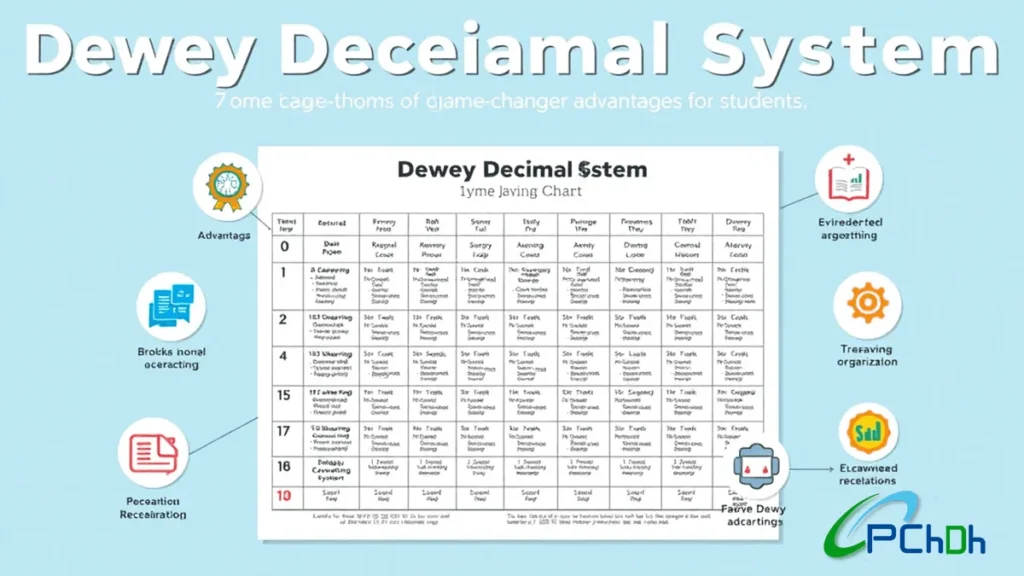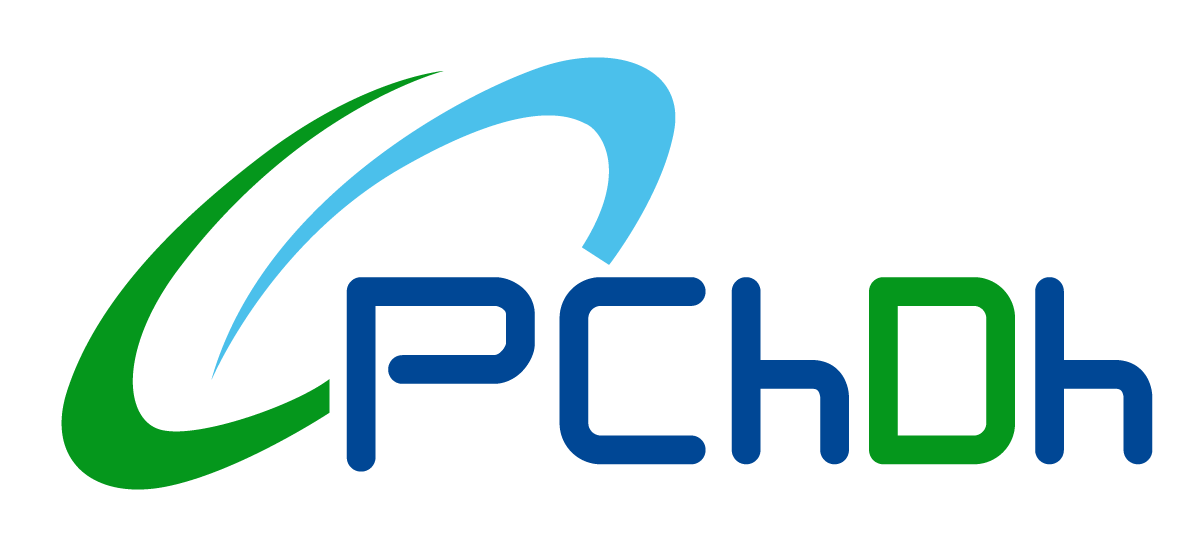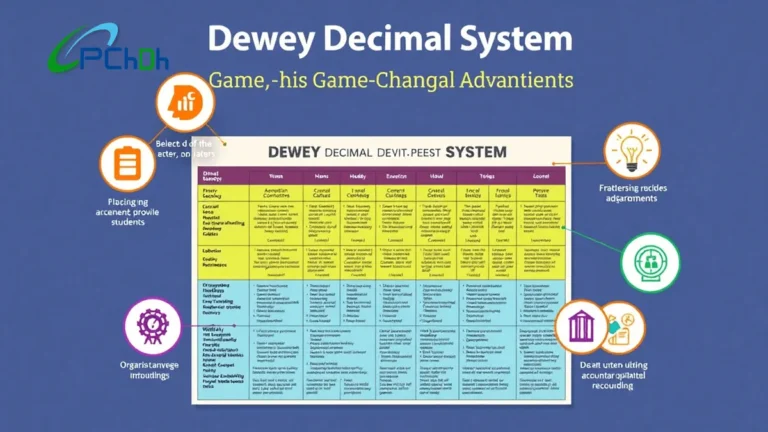The Dewey Decimal System (DDC) is an essential library organization system that has transformed how students access and discover knowledge. Created by Melvil Dewey in 1876, this ingenious classification system has made countless libraries efficient and user-friendly spaces where information flows seamlessly to eager learners.
Imagine entering a library with millions of books – where would you begin? The DDC chart serves as your guide, breaking down the vast world of knowledge into manageable, organized sections. This systematic approach has made it the preferred choice for 95% of public and school libraries worldwide.
This article explores seven powerful advantages the Dewey Decimal System chart offers students:
- Universal recognition across languages and cultures
- Logical structure enhancing learning processes
- Flexible adaptation to different library sizes
- Streamlined efficiency in research
- Regular updates maintaining relevance
- Cost-effective implementation
- Future-proof expansion capabilities
These benefits empower students to navigate libraries confidently, conduct research efficiently, and develop essential information literacy skills. Whether you’re a high school student working on a research paper or a graduate student diving deep into academic resources, understanding these advantages will transform your library experience.
Let’s explore how this time-tested system continues to shape modern education and empower student success in our digital age.
Understanding the Dewey Decimal System Chart
The Dewey Decimal System Chart provides a clear and organized way to understand all areas of knowledge. It does this by dividing information into different categories, much like how a library organizes its books.
The Ten Main Classes of Knowledge
At the heart of this system are ten main classes that encompass all subjects:
- 000-099: Computer Science, Information & General Works
- 100-199: Philosophy & Psychology
- 200-299: Religion
- 300-399: Social Sciences
- 400-499: Language
- 500-599: Science
- 600-699: Technology
- 700-799: Arts & Recreation
- 800-899: Literature
- 900-999: History & Geography
Each main class is further divided into ten divisions, and each division has ten sections. This structure, based on decimals, allows for precise categorization of materials.
For example, under the 500s (Science):
500: General Science
510: Mathematics
520: Astronomy
530: Physics
How the Chart Works
The chart uses colors and indentation to make it easy to navigate. Related subjects are grouped together, creating connections between topics. For instance, if a student is studying physics, they can easily find resources on mathematics by following the visual hierarchy.
The decimal notation system also allows for detailed classification of specific topics. For example, a book about quantum mechanics might be classified as 530.12, where:
- 500 = Science
- 530 = Physics
- .12 = Quantum Theory
This organized system helps students see how different subjects are related and find more specific information within broader areas of knowledge. The visual chart is a helpful tool for understanding these connections and finding resources in the library efficiently.
1. Universal Recognition and Accessibility
The Dewey Decimal System’s use of Arabic numerals (0-9) creates a universal language for library organization that transcends cultural and linguistic boundaries. You’ll find these familiar numbers in libraries across 135 countries, making it possible to locate resources whether you’re studying in Tokyo, researching in Paris, or browsing books in São Paulo.
Key Benefits for International Students:
- Navigate libraries without language barriers
- Understand classification systems instantly
- Access resources efficiently in foreign institutions
- Transfer research skills between different countries
The system’s numerical nature proves particularly valuable for:
- Exchange Students: Quick adaptation to new library environments
- ESL Learners: Reduced dependency on language proficiency
- International Researchers: Seamless access across global institutions
- Distance Learning Students: Consistent resource location across different libraries
This universal recognition extends to digital catalogs and online databases. Students using library management systems can search using these standardized numbers, creating consistency between physical and digital resources. The numerical system also supports:
- Cross-referencing between libraries worldwide
- Interlibrary loan services
- Digital resource sharing platforms
- Global academic collaboration
Libraries serving diverse student populations benefit from this numerical system’s clarity. A student from China can locate materials in an American library using the same classification numbers they learned at home. This standardization reduces learning curves and enables students to focus on their research rather than learning new organizational systems.
2. Logical Structure Enhancing Learning
The Dewey Decimal System’s hierarchical organization creates a powerful learning framework for students. Each number in the system represents a logical progression from broad to specific topics, enabling students to visualize knowledge relationships naturally.
Understanding the Structure
Consider the Social Sciences category (300s):
- 300: Social Sciences (broad category)
- 370: Education
- 371: School management
- 371.3: Teaching methods
This structured breakdown helps students:
- Identify parent-child relationships between subjects
- Discover related topics within their research area
- Build comprehensive understanding of subject interconnections
Supporting Cognitive Development
The system’s logical structure supports cognitive development through:
Pattern Recognition
- Students learn to identify recurring themes across disciplines
- Similar decimal patterns indicate related subject matter
- Visual organization aids memory retention
Research Navigation
- Students can expand or narrow their search scope instantly
- Moving up the hierarchy broadens research perspectives
- Moving down reveals specific subtopics for detailed study
Knowledge Mapping
- Students create mental models of subject relationships
- Understanding where topics fit in the larger knowledge landscape
- Identifying cross-disciplinary connections
Developing Critical Thinking Skills
This systematic organization develops critical thinking skills as students learn to:
- Analyze subject relationships
- Categorize information effectively
- Apply organizational principles to their own research
- Recognize patterns in knowledge structures
The DDC’s logical framework transforms random book browsing into structured discovery, enabling students to build comprehensive research strategies and deeper subject understanding.
3. Flexibility to Suit Different Library Sizes
The Dewey Decimal System’s adaptability shines through its ability to scale according to library size and student needs. You’ll find two primary versions of the DDC:
- Abridged Edition: Perfect for small school libraries
- Full Edition: Designed for larger institutions
This scalability allows libraries to tailor their organization system to their specific needs. A small elementary school library can implement the abridged version, making it easier for young students to locate age-appropriate materials. As the library grows, it can seamlessly transition to the full edition without disrupting the existing organization.
The DDC’s flexibility extends to customization options that benefit students at different academic levels:
- Elementary Level: Basic subject divisions with shorter call numbers
- Middle School: Intermediate depth of classification
- High School: More detailed subject breakdowns
- College Level: Full subject specificity
Libraries can adjust the depth of classification based on their collection’s focus areas. A school specializing in science might use more detailed numbers for scientific subjects while keeping humanities classifications simpler. This targeted approach helps students quickly locate resources relevant to their studies without getting lost in unnecessary complexity.
The system’s built-in scalability ensures libraries can grow their collections while maintaining organizational consistency. You can add new materials and expand subject areas without restructuring the entire system, making it a reliable choice for evolving educational institutions.

4. Ease of Use Facilitating Efficient Research
The Dewey Decimal System’s class numbers are designed with student efficiency in mind. You’ll find these numbers remarkably straightforward to write, remember, and type – a critical feature when you’re racing against assignment deadlines or conducting quick research.
Simple Number Structure
- Three-digit base numbers (000-999)
- Decimal points for subject refinement
- Left-aligned numbers for easy scanning
- Consistent pattern recognition across categories
The system’s intuitive design reduces mental load during research tasks. Picture searching for books about Ancient Egyptian Architecture – you’ll find them under 722.32, where:
- 700 represents Arts & Recreation
- 720 narrows to Architecture
- 722.32 pinpoints Ancient Egyptian specifically
Digital Catalog Integration
The DDC’s numerical system works seamlessly with digital library catalogs. You can:
- Type numbers directly into search bars
- Filter results by number ranges
- Navigate through broader/narrower topics easily
Time-Saving Features
- Visual shelf organization matches numerical order
- Similar topics cluster together physically
- Quick browsing of related materials
- Predictable number patterns across subjects
Students report spending less time searching and more time learning when using DDC-organized libraries. The system’s predictability creates a familiar research environment across different libraries, allowing you to apply your search skills universally.
These user-friendly features prove particularly valuable during group projects, where multiple students need to locate resources simultaneously. The clear numerical progression eliminates common confusion points, enabling efficient collaboration and resource sharing among classmates.
5. Regular Updates Keeping Content Relevant
The DDC editorial team works tirelessly to maintain the system’s relevance in our fast-paced digital age. Each updated edition incorporates emerging fields, technological advancements, and evolving academic disciplines, ensuring students access the most current information available.
Recent Updates Include:
- Artificial Intelligence and Machine Learning classifications
- Cryptocurrency and blockchain technology categories
- Climate change and environmental sustainability sections
- Social media and digital communication entries
- Gender studies and identity-related topics
The system’s adaptability proves crucial for students conducting research in cutting-edge fields. A student researching quantum computing, for instance, can find relevant materials under the recently updated technology section, complete with specific subcategories for quantum mechanics and computational methods.
Benefits of Regular Updates:
- Students access contemporary research materials without outdated classification barriers
- New academic disciplines receive proper representation
- Cross-disciplinary studies become easier to navigate
- Digital resources integrate seamlessly with physical collections
- Research papers reflect current academic standards
The DDC’s commitment to staying current extends beyond adding new categories. The editorial team also revises existing classifications to reflect modern understanding and terminology. This dynamic approach ensures students work with an organizational system that mirrors the current state of knowledge in their field.
Libraries receive these updates through regular electronic notifications, allowing them to implement changes promptly. This real-time adaptation capability helps students stay at the forefront of their academic pursuits, particularly in rapidly evolving fields like technology, medicine, and social sciences.
6. Cost-Effectiveness Supporting Educational Institutions
The Dewey Decimal System stands out as a remarkably affordable classification solution for educational institutions. A complete set of DDC schedules and indexes costs significantly less than alternative classification systems – making it an ideal choice for schools operating under tight budget constraints.
Libraries can acquire:
- Basic DDC schedules for under $400
- WebDewey subscription starting at $75 annually
- Abridged editions for smaller collections at reduced prices
- Free online training resources and implementation guides
This cost-effective pricing structure creates a ripple effect of benefits for students:
- Increased Resource Allocation: Schools save money on classification systems and redirect funds toward:
- Expanding book collections
- Purchasing digital resources
- Upgrading library technology
- Supporting student programs
The system’s affordability enables schools in underserved communities to implement professional library organization methods. Small private schools, rural institutions, and developing nation facilities can access the same high-quality classification system used by major libraries worldwide.
Budget Impact Analysis:
- Average annual cost per student: Less than $1
- Implementation costs: 60-80% lower than proprietary systems
- Maintenance expenses: Minimal due to standardized updates
- Training requirements: Reduced through intuitive design
The DDC’s cost-effectiveness extends beyond initial purchase – its standardized nature reduces ongoing operational expenses through simplified cataloging processes and reduced staff training needs. Schools can maintain professional library services without straining their budgets, ensuring students receive consistent access to well-organized educational resources.
7. Expansion Capability for Future-Proofing Knowledge Organization
The Dewey Decimal System’s built-in extensibility makes it a dynamic tool for organizing evolving knowledge. You’ll find this system adapts seamlessly to new subjects and emerging fields without disrupting existing classifications.
Key Features of DDC’s Expansion Capability:
- Decimal-based structure allows infinite subdivision
- Built-in gaps between numbers accommodate new topics
- Flexible notation system supports interdisciplinary subjects
- Regular updates integrate emerging fields
The system’s expandability directly benefits students researching cutting-edge topics. When exploring fields like artificial intelligence, blockchain technology, or quantum computing, you’ll discover these subjects neatly integrated into the existing framework.
Benefits for Modern Research:
- Access to newly emerging disciplines without confusion
- Clear pathways to interdisciplinary resources
- Seamless integration of digital and traditional materials
- Consistent organization across evolving subject areas
Consider studying a topic like machine learning. The DDC accommodates this field within computer science while creating connections to related areas like statistics, robotics, and cognitive psychology. This interconnected structure helps you discover relevant resources across multiple disciplines.
The system’s expansion capability also supports specialized research needs:
- Cross-referencing between traditional and emerging fields
- Integration of new media formats
- Accommodation of technological advances
- Support for interdisciplinary studies
This future-proof design ensures you’ll always find relevant materials, regardless of how knowledge boundaries shift or new disciplines emerge. The DDC’s ability to grow with advancing knowledge keeps your research efficient and comprehensive.
Addressing Criticisms While Emphasizing Benefits for Students
The Dewey Decimal System has some criticisms that need to be addressed. Critics point out that there is cultural bias in how subjects are represented, with a particular focus on its Western-centric worldview. For instance, in religious classifications, extensive sections are dedicated to Christianity while other world religions are condensed into smaller categories.
Common Challenges:
- Complex decimal notations can intimidate new users
- Subject categorization doesn’t always reflect modern perspectives
- Cross-disciplinary topics can be difficult to classify
- Limited representation of non-Western knowledge systems
Yet schools have developed effective strategies to maximize DDC benefits while addressing these limitations:
Practical Solutions:
- Creating simplified guides with student-friendly language
- Using visual aids and color coding for easier navigation
- Implementing supplementary cultural classification markers
- Training sessions focused on practical usage rather than system intricacies
Libraries enhance the system’s effectiveness through:
- Custom signage highlighting diverse materials
- Alternative subject headings for improved representation
- Digital catalog interfaces with multiple search options
- Regular staff training on inclusive categorization
The system’s core strengths – standardization, hierarchical organization, and universal recognition – continue to outweigh its limitations in educational settings. Students benefit from consistent access to materials across different libraries, making research skills transferable between institutions. The system’s structured approach to knowledge organization provides a reliable framework for academic exploration, despite its imperfections.
Moreover, as highlighted in various studies, the benefits of a standardized system like DDC far exceed its drawbacks when effectively utilized. Modern libraries actively work to balance these challenges with practical solutions, ensuring students can effectively utilize the system while maintaining awareness of its limitations. This balanced approach helps maintain DDC’s relevance as a vital tool in academic research and learning.
Conclusion
The Dewey Decimal System chart is a powerful tool that transforms how students navigate and access knowledge in libraries worldwide. Its systematic organization empowers students to conduct research efficiently, develop critical thinking skills, and build connections between different subjects.
Students who master the DDC chart gain:
- Faster resource location
- Better understanding of knowledge relationships
- Enhanced research capabilities
- Improved study efficiency
- Global accessibility to information
The system’s proven track record in educational settings makes it an invaluable asset for both students and educators. Libraries implementing the DDC chart create an environment where students can independently explore, learn, and grow their research abilities.
For Educators and Librarians:
“Your role in helping students understand and utilize the DDC chart directly impacts their academic success. Consider creating engaging tutorials, visual guides, and hands-on activities to make the system more approachable for your students.”
Ready to maximize the DDC’s potential in your library?
Transform your library experience and unlock the full potential of organized knowledge with the Dewey Decimal System chart.
FAQs (Frequently Asked Questions)
What is the Dewey Decimal System and why is it important for students?
The Dewey Decimal System (DDC) is a hierarchical library classification method that organizes knowledge into ten main classes using decimal notation. It is significant for students as it enables efficient access to information by logically grouping related subjects, facilitating better comprehension and research.
How does the Dewey Decimal System chart enhance student learning?
The DDC chart’s logical hierarchical structure helps students understand connections between broad subjects and specific topics. This fosters critical thinking and research skills by guiding structured discovery of resources, improving overall learning outcomes.
Can the Dewey Decimal System be adapted for different library sizes?
Yes, the DDC offers flexibility through abridged or full versions of its schedules, making it scalable for various library sizes. Small school libraries can use simplified versions, while large public libraries benefit from comprehensive classifications, ensuring relevant material access for all students.
What makes the Dewey Decimal System easy to use for student research?
The system employs simple class numbers using universally recognized Arabic numerals that are easy to write, remember, and type. This design reduces confusion during library visits or online catalog searches, enabling students to quickly locate books and resources efficiently.
How does the Dewey Decimal System stay current with new knowledge?
The DDC undergoes regular updates by an editorial team that incorporates emerging fields and modern subjects. This ensures that students have access to contemporary information essential for academic research across evolving disciplines.
Are there any criticisms of the Dewey Decimal System, and how are they addressed in educational settings?
While the DDC faces criticisms such as cultural biases in subject representation and complexity in number assignments, it remains invaluable in education. Schools mitigate these challenges through strategies like supplemental guides and training, maximizing its benefits for student learning and resource organization.


